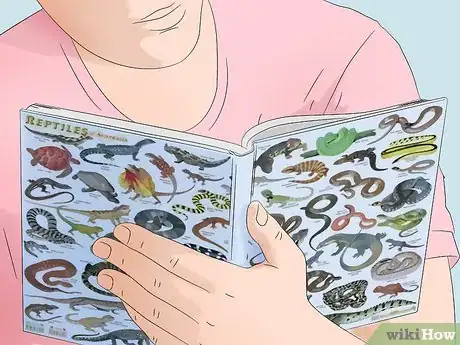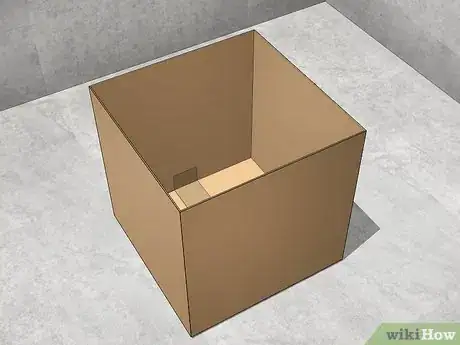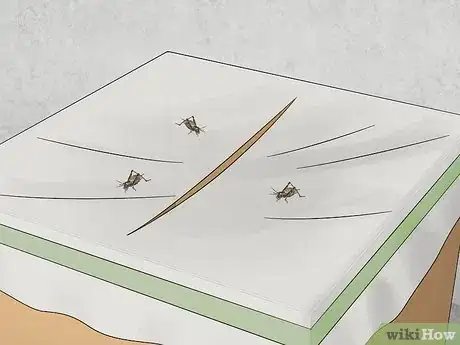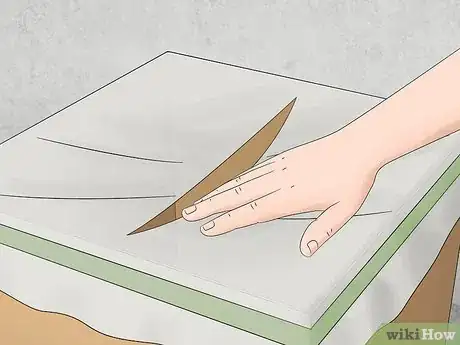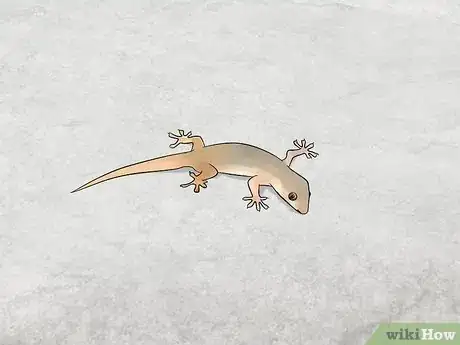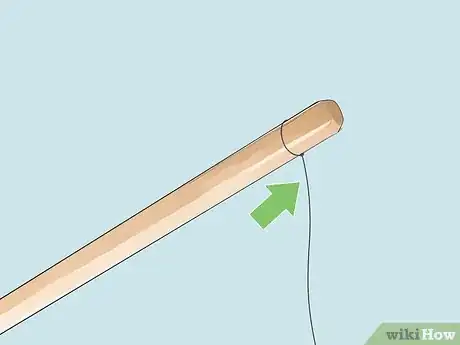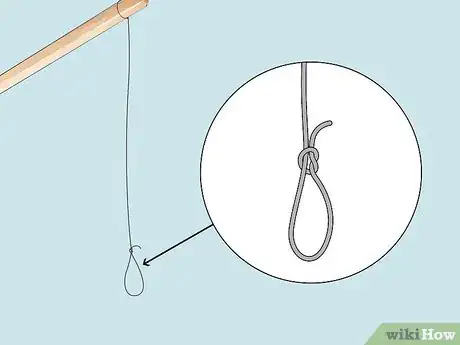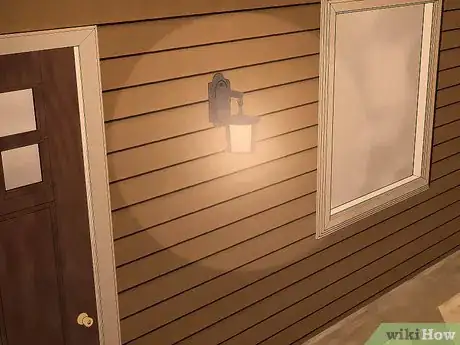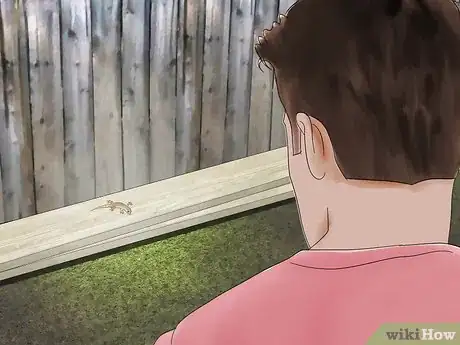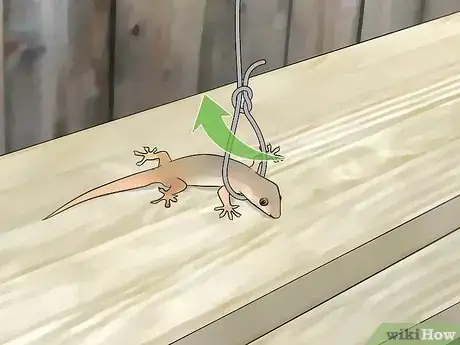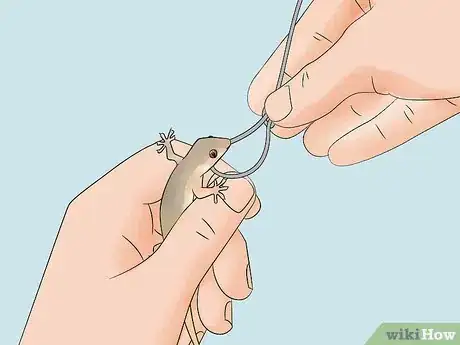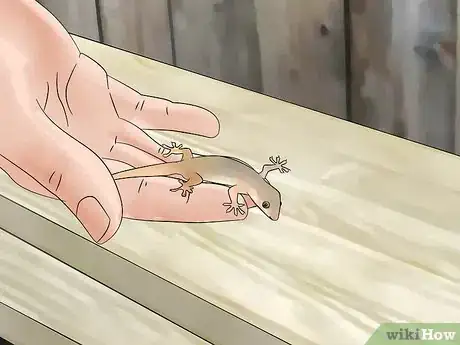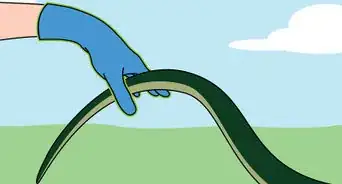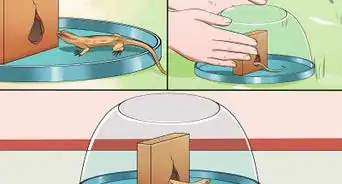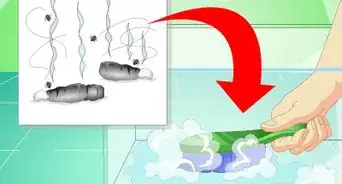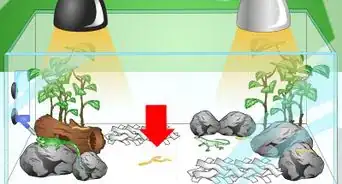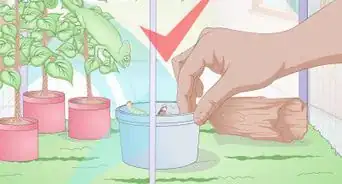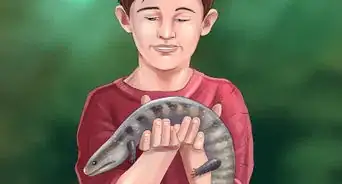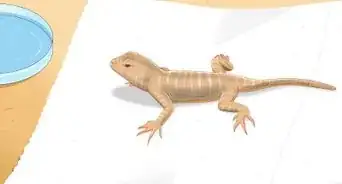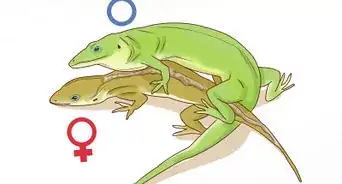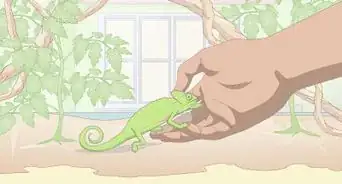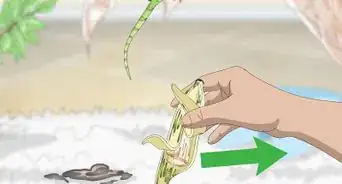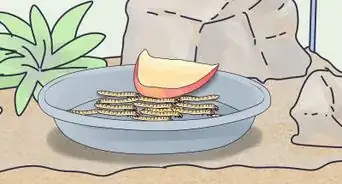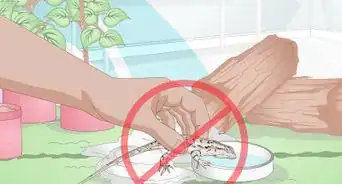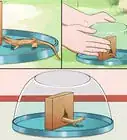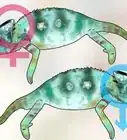wikiHow is a “wiki,” similar to Wikipedia, which means that many of our articles are co-written by multiple authors. To create this article, 46 people, some anonymous, worked to edit and improve it over time.
This article has been viewed 336,994 times.
Learn more...
Lizards are seen all over the world, but often only as a glimpse before it disappears back into a hiding spot! Fortunately, you can use these methods to outsmart and capture a lizard before you approach close enough to startle it. Just like any wild animal, lizards should not be kept as permanent pets without extensive preparation and researching laws and permits in your region. After capturing the lizard, show it to your friends, photograph or sketch it, then release it back into the wild.
Steps
Setting a Trap
-
1Learn about lizards in your area. Try to research the behavior of local lizards before setting your trap, so you know when they are active and what type of bait and trap location is likely to be successful. A reptile identification guide booklet or website for your area may contain useful information. You can also observe the behavior of lizards in your home or yard and see where they gather.
- If you cannot find useful information, follow the general advice in this section.
-
2Prepare a box as a temporary or permanent home. Any sturdy container without a strong odor can be used as a lizard trap. If you wish to keep your lizard permanently, however, research how to construct a suitable home beforehand, suited for the lizard species in your area. For temporary captures, simply make your box a little more comfortable for the lizard by placing some local leaves and grasses at the bottom. This also may make the trap less suspicious.
- If you plan to keep a lizard permanently, find out about laws and permits in your area before you begin, to make sure you are not doing anything illegal.
- If you are not sure how to construct a good lizard home, look for vivariums in the local yellow pages. The employees there should be able to advise you.
Advertisement -
3Cover the box with plastic wrap and cut a slit. Stretch plastic wrap over the entire box, taping it to the sides. Cut a slit long enough for the local lizards to fall through near the middle of the box.
- If you're not sure how large the local lizards are, cut the slit roughly six inches (15 cm) long.
-
4Place the trap in a good location. If you've seen lizards active in a particular area, place the box there. Otherwise, look for places where insects congregate, such as near light sources that are on at night. Hiding places in your yard such as rock walls or bushes may also be a good option.
-
5Bait the trap. Many lizards eat insects, but because there are so many species of lizard it is best to research the diet of species in your area. Otherwise, use crickets, moths, flies, or any other insect small enough for the target lizard to eat. Keep in mind that some lizards may not eat dead prey, but live bait may not be practical as it is difficult to keep in place.[1]
- If the bait is light enough, place it on the plastic wrap near the slit.
-
6Check the trap frequently. You may not catch a lizard for several days or longer, so don't give up if you don't see one right away. Check two or three times a day at least, so a captured lizard doesn't starve to death. Replace live bait after it dies, or dead bait every one or two days to keep it fresh.
- If you give up on the trap, remember to remove it and throw it away so animals do not fall into it.
Using a Lizard "Fishing Pole"
-
1Use this method for small lizards only. This method involves the construction of a "fishing pole" for catching lizards. This is a surprisingly successful technique often used by biologists. However, as the catch involves removing a noose from a struggling, startled lizard, it is not wise to use on large, sharp-toothed lizards without experience and protective clothing.[2]
-
2Find a long stick. Find a stick or other long object at least three feet (0.9 meters) long. You may use an actual fishing pole if you have one, but you may want to use a softer material in place of fishing line, as described below.
-
3Attach a long piece of waxed dental floss to the stick. Cut off a piece of waxed dental floss at least as long as the stick.[3] Tie one end of this onto one end of the stick. If you have no floss, you can use a different soft line, such as a strong, long grass blade to catch small lizards. Fishing line is not recommended for inexperienced lizard catchers as sharp lines can cut the lizard.
-
4Tie the other end into a slip knot. Form a loop at the loose end of the floss. Grasp the rope on the side of the loop closest to the stick, and form a new loop by moving your fingers under and through the first loop. Keep pulling until the first loop has tightened. You should now have a makeshift "fishing pole" with a noose at the end.
- The noose has to be large enough to go around the lizard's head.
-
5Search for lizards in likely places. Lizards may be found where insects gather, such as a compost heap. If you do not see any running around or lying in the sun, they may be hiding under boards, in firewood piles, or in similar shady hiding places.
- If you can find out what species of lizards live in your area, you can research their behavior online or in wildlife guides for better information about where to find them.
-
6Try looking for lizards around lights at night. If you can't find any lizards during the day, you may have better luck searching for species that are active during the night. Nocturnal lizards are often found hunting insects, which gather around porch lights, lighted windows, and other light sources.
-
7Approach the lizard slowly from the front or side. Oddly, this technique may work better if the lizard can see you, as the lizard may focus on your approach instead of on the noose. Move very slowly, and only come close enough to reach the lizard with your noose. Sudden movements may cause the lizard to run away and hide.
-
8Gently fit the noose around the lizard's head. Some species and individuals react quickly to the noose, while others will remain motionless even as the noose bumps into them several times. Once you've found the second type, or practiced your noose-slinging skills, fit the noose around its neck. Its own weight should tighten the slipknot as it moves, preventing it from escaping.
-
9Carefully remove the noose. Grasp the lizard gently but firmly by the back, not the tail, limbs, or head. Pull the noose off in short, gentle motions.
-
10Do not keep your lizard permanently unless you are prepared. Keeping a lizard permanently requires preparing a suitable home for the lizard, researching how to care for that specific species, and potentially acquiring permits (if keeping wild lizards is even legal in your region). In most cases, it is recommended that you keep the lizard for no more than a couple hours. Once you are done examining it or sketching it, release it as close to the spot you found it as possible.
Community Q&A
-
QuestionWhat is the best bait to use?
 Community AnswerIt depends on which type of lizard you are dealing with. But small insects like roly polys, small beetles, and small spiders will usually work best.
Community AnswerIt depends on which type of lizard you are dealing with. But small insects like roly polys, small beetles, and small spiders will usually work best. -
QuestionWhat if I can't find a picture of the lizard I want to catch?
 Community AnswerYou could search for the lizards that are commonly found in your state/region. Finding a list of local lizards can make it easier to narrow down your search.
Community AnswerYou could search for the lizards that are commonly found in your state/region. Finding a list of local lizards can make it easier to narrow down your search. -
QuestionWhat do I do if a different animal enters the box trap?
 Community AnswerDepending on what type of animal, you might need gloves - or just take the top off and let the animal go.
Community AnswerDepending on what type of animal, you might need gloves - or just take the top off and let the animal go.
Warnings
- Do not reach into holes searching for lizards. You may encounter more dangerous animals, such as venomous spiders, snakes, or scorpions.⧼thumbs_response⧽
- Some lizards bite. Very few are toxic, or venomous, but know your quarry and respect those that are dangerous.⧼thumbs_response⧽
Things You'll Need
- Long stick or fishing pole
- Waxed dental floss, long grass blade, or soft fishing line
References
About This Article
To catch a lizard, start by covering a sturdy box or container with plastic wrap and securing it with tape. Next, cut a 6 inch slit in the middle of the box for the lizard to fall through. Afterwards, place the trap in a location where lizards are active, or near light sources where insects like to congregate. Then, bait the trap by placing small insects that lizards like to eat, such as crickets, moths, or flies on the plastic wrap near the slit. Remember to check on the trap 2 to 3 times a day to ensure that the lizard isn’t left inside it for too long. To learn more, including how to catch lizards using a “fishing pole” made from sticks and dental floss, keep reading.
